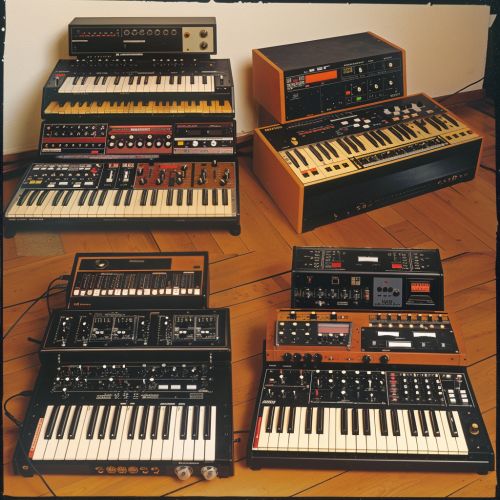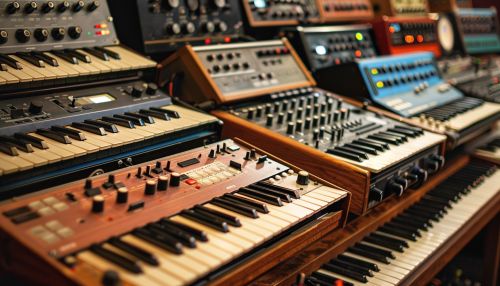History of Electronic Dance Music
Origins and Early Development (1970s-1980s)
Electronic Dance Music (EDM) traces its origins to the late 1970s and early 1980s, a period marked by significant technological advancements and cultural shifts. The emergence of synthesizers, drum machines, and sequencers played a crucial role in shaping the sound and structure of early electronic music. Pioneering artists such as Kraftwerk, Giorgio Moroder, and Yellow Magic Orchestra utilized these technologies to create innovative sounds that laid the groundwork for future genres.
The disco era of the late 1970s also had a profound influence on the development of EDM. Disco's emphasis on rhythm, repetitive beats, and danceability provided a template that electronic musicians would later expand upon. The decline of disco in the early 1980s gave rise to new electronic genres such as synthpop, electro, and Hi-NRG, which incorporated elements of disco while introducing new electronic sounds and production techniques.


The Rise of House and Techno (1980s)
The mid-1980s witnessed the emergence of house music and techno, two genres that would become foundational to the EDM landscape. House music originated in Chicago and was characterized by its four-on-the-floor beat, soulful vocals, and use of synthesizers and drum machines. Key figures in the house music scene included Frankie Knuckles, Larry Heard, and Marshall Jefferson.
Simultaneously, techno music was developing in Detroit, spearheaded by artists such as Juan Atkins, Derrick May, and Kevin Saunderson. Techno was distinguished by its futuristic sound, complex rhythms, and emphasis on electronic instrumentation. Both house and techno quickly gained popularity in underground clubs and raves, setting the stage for the global spread of EDM.
Global Expansion and Diversification (1990s)
The 1990s marked a period of rapid expansion and diversification for EDM. The advent of digital audio workstations (DAWs) and affordable music production software democratized music creation, allowing a new generation of producers to experiment with electronic sounds. This era saw the rise of numerous subgenres, including trance, drum and bass, hardcore, and ambient.
Trance music, characterized by its uplifting melodies and hypnotic rhythms, gained a massive following in Europe, with artists like Paul van Dyk, Armin van Buuren, and Tiesto leading the charge. Drum and bass, known for its fast breakbeats and heavy basslines, emerged from the UK jungle scene, with pioneers such as Goldie, Roni Size, and LTJ Bukem pushing the genre forward.
The Mainstream Breakthrough (2000s)
The early 2000s saw EDM break into the mainstream, driven by the success of artists like Daft Punk, The Chemical Brothers, and Fatboy Slim. These artists brought electronic music to a wider audience through their innovative productions and high-energy live performances. The rise of music festivals such as Ultra Music Festival, Electric Daisy Carnival, and Tomorrowland further solidified EDM's place in popular culture.
During this period, the genre of electro house gained prominence, characterized by its heavy basslines and aggressive synths. Artists like Deadmau5, David Guetta, and Swedish House Mafia became household names, bridging the gap between underground and mainstream electronic music.
The Digital Age and EDM's Global Dominance (2010s-Present)
The 2010s ushered in a new era for EDM, marked by the proliferation of digital streaming platforms and social media. These technologies allowed artists to reach global audiences more easily and facilitated the rapid dissemination of new music. The genre of dubstep, with its distinctive wobble bass and syncopated rhythms, gained widespread popularity, propelled by artists such as Skrillex, Bassnectar, and Zeds Dead.
The rise of future bass, trap, and tropical house further diversified the EDM landscape, with artists like Flume, Diplo, and Kygo pushing the boundaries of electronic music. The integration of EDM into popular music genres such as pop and hip-hop also contributed to its global dominance, with collaborations between electronic producers and mainstream artists becoming increasingly common.
Cultural Impact and Criticism
EDM has had a significant cultural impact, influencing fashion, visual arts, and lifestyle. The rave culture, characterized by its emphasis on community, self-expression, and hedonism, has become synonymous with EDM. Festivals and events often feature elaborate stage designs, light shows, and immersive experiences that enhance the music and create a sense of unity among attendees.
However, EDM has also faced criticism, particularly regarding issues of commercialization and drug use. Critics argue that the mainstream success of EDM has led to a dilution of its artistic integrity, with some artists prioritizing commercial appeal over innovation. Additionally, the association of EDM events with drug use has raised concerns about safety and health, prompting increased scrutiny and regulation.
See Also
- Kraftwerk
- Disco
- House music
- Techno music
- Trance music
- Drum and bass
- Ultra Music Festival
- Dubstep
- Future bass
- Rave culture
